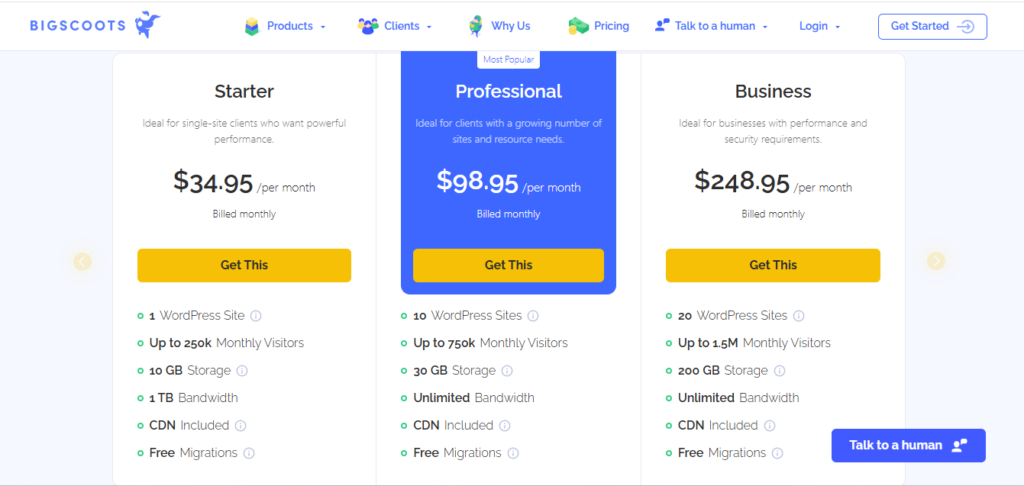Introduction
Subdomains in are an essential part of any hosting configuration, providing structured organization and enhancing accessibility for different sections of a website. For users hosting their website on BigScoots, identifying and managing subdomains can be crucial for optimizing site performance, security, and user experience. This guide will walk you through various techniques and tools to find subdomains in BigScoots, equipping you with the insights needed to effectively manage and monitor all your subdomain structures.
What Are Subdomains and Why Are They Important?
A subdomain is a subset of your main domain that operates as a unique URL but still falls under your primary domain. For instance, in the domain structure blog.example.com, “blog” is the subdomain, while “example.com” is the primary domain. Subdomains are often used to separate different areas of a website, such as a blog, e-commerce store, or support center. They can improve user experience, streamline website organization, and enhance search engine optimization (SEO) by targeting specific audiences.
Subdomains are particularly important in hosting configurations because they allow website owners to manage separate areas without affecting the primary site. In BigScoots, finding these subdomains is essential for ensuring proper security, load balancing, and overall site performance.
Personal. Expert. Always There. That’s Real Managed Hosting, click here: https://portal.bigscoots.com/?affid=3563
Why Identify Subdomains in BigScoots?
There are several reasons why identifying and managing subdomains in BigScoots is crucial:
- Enhanced Security: Unmanaged subdomains can be vulnerable to cyber threats, such as subdomain takeovers or malware injections.
- SEO Optimization: Properly managed subdomains contribute to a more organized site architecture, which can enhance search engine rankings.
- Better User Experience: By ensuring all subdomains are active and accessible, you provide a seamless browsing experience for users.
- Simplified Site Management: Knowing your active subdomains allows you to efficiently manage content and avoid duplicate resources.
Methods to Find Subdomains in BigScoots
Several tools and techniques can help you find subdomains associated with your primary domain in BigScoots. Here are some of the most effective methods:

1. Using BigScoots cPanel
For users with cPanel access on BigScoots, finding subdomains is straightforward:
- Log in to your cPanel: Access BigScoots and log in to your cPanel account.
- Navigate to the “Domains” Section: Under “Domains,” select the “Subdomains” option. This interface shows a list of all existing subdomains within your hosting account.
- Review and Edit Subdomains: The cPanel interface allows you to view, edit, or delete subdomains easily.
This method is the most straightforward, as it is built into your BigScoots account and requires no external tools or software.
2. Using DNS Lookup Tools
DNS lookup tools are powerful resources for identifying subdomains. They check DNS records associated with your domain and reveal subdomains in use. Some popular DNS lookup tools include:
- MXToolbox: Known for its comprehensive DNS checking capabilities, MXToolbox provides a list of DNS records, including subdomains.
- DNSdumpster: A favorite for cybersecurity experts, DNSdumpster visualizes DNS data to reveal subdomains.
- Google Dig Tool: Accessible through Google’s Developer Tools, this service allows you to perform DNS lookups to locate subdomains.
To use a DNS lookup tool:
- Enter your primary domain (e.g., example.com) in the tool.
- Run a search, and the tool will display any associated subdomains.
- Review the results to verify their relevance to your BigScoots setup.
3. Third-Party Subdomain Enumeration Tools
In addition to DNS lookup tools, dedicated subdomain enumeration tools are designed to scan for and identify subdomains associated with a domain. Here are some popular options:
- Sublist3r: A Python-based tool, Sublist3r aggregates data from sources like Google, Bing, and DNSdumpster to reveal subdomains.
- Amass: Created by the Open Source Network Foundation, Amass is highly effective for network mapping and asset discovery, including subdomain enumeration.
- Assetfinder: An easy-to-use tool for finding subdomains, Assetfinder gathers data from various sources to build a comprehensive list.
These tools are typically recommended for advanced users, as they often require installation and command-line interface (CLI) knowledge. Once you’ve identified subdomains, you can cross-check them within BigScoots to manage or remove unnecessary ones.

4. Using Security Scanning Tools
Security scanning tools are invaluable for users looking to identify potential vulnerabilities in subdomains. Many security tools offer subdomain discovery as part of their features. Here are a few:
- Shodan: Known as the “search engine for hackers,” Shodan indexes connected devices, including subdomains. It can help reveal exposed subdomains on BigScoots.
- Spyse: Spyse specializes in vulnerability assessments and offers subdomain discovery to assist users in managing digital assets.
- Censys: Similar to Shodan, Censys allows users to search for subdomains and assess their security posture.
Security scanning tools are highly recommended for those who want to ensure all subdomains are securely configured, especially on public-facing sites.
5. Using Certificate Transparency Logs
Certificate Transparency (CT) logs track all SSL/TLS certificates issued by certificate authorities, including those for subdomains. By examining CT logs, you can identify subdomains linked to your main domain on BigScoots.
Several websites aggregate CT log data for easy access:
- crt.sh: Enter your domain to view certificates and associated subdomains.
- CertSpotter: A useful tool that scans CT logs to find active SSL/TLS certificates for your domain.
- Censys CT: In addition to its scanning tools, Censys offers a dedicated CT log search feature to find subdomains.
This method is particularly effective for tracking subdomains that might have been created recently and aren’t yet indexed by DNS tools.

Tips for Managing Subdomains on BigScoots
Identifying subdomains is only the first step. Properly managing these assets ensures better website performance and security. Here are some tips:
- Regularly Monitor DNS Records: Use a DNS tracking tool to continuously monitor your subdomains.
- Implement Subdomain Security Measures: Ensure that each subdomain is protected with SSL/TLS and has appropriate security configurations.
- Evaluate the Necessity of Each Subdomain: Regularly review subdomains to assess their importance and deactivate or delete those no longer in use.
- Integrate with CDN and Firewall Services: Protect your subdomains from attacks by integrating with services like Cloudflare or Sucuri for added security.
Conclusion
Finding and managing subdomains in BigScoots is essential for maintaining a secure and optimized website. By leveraging built-in tools, DNS lookup platforms, and advanced security scanners, you can efficiently track all subdomains associated with your primary domain. Proper subdomain management not only enhances security but also contributes to a streamlined user experience and better search engine visibility.




